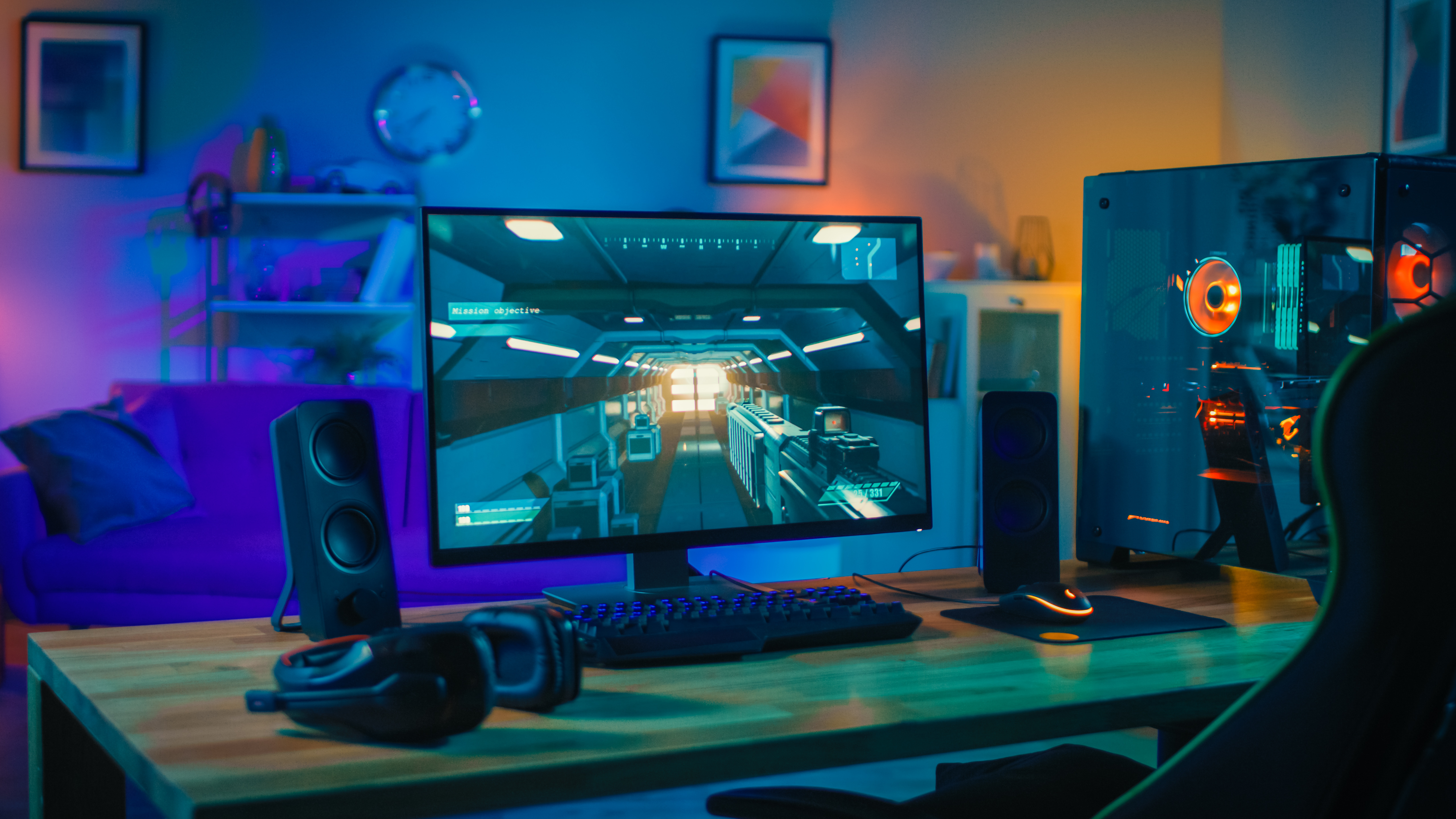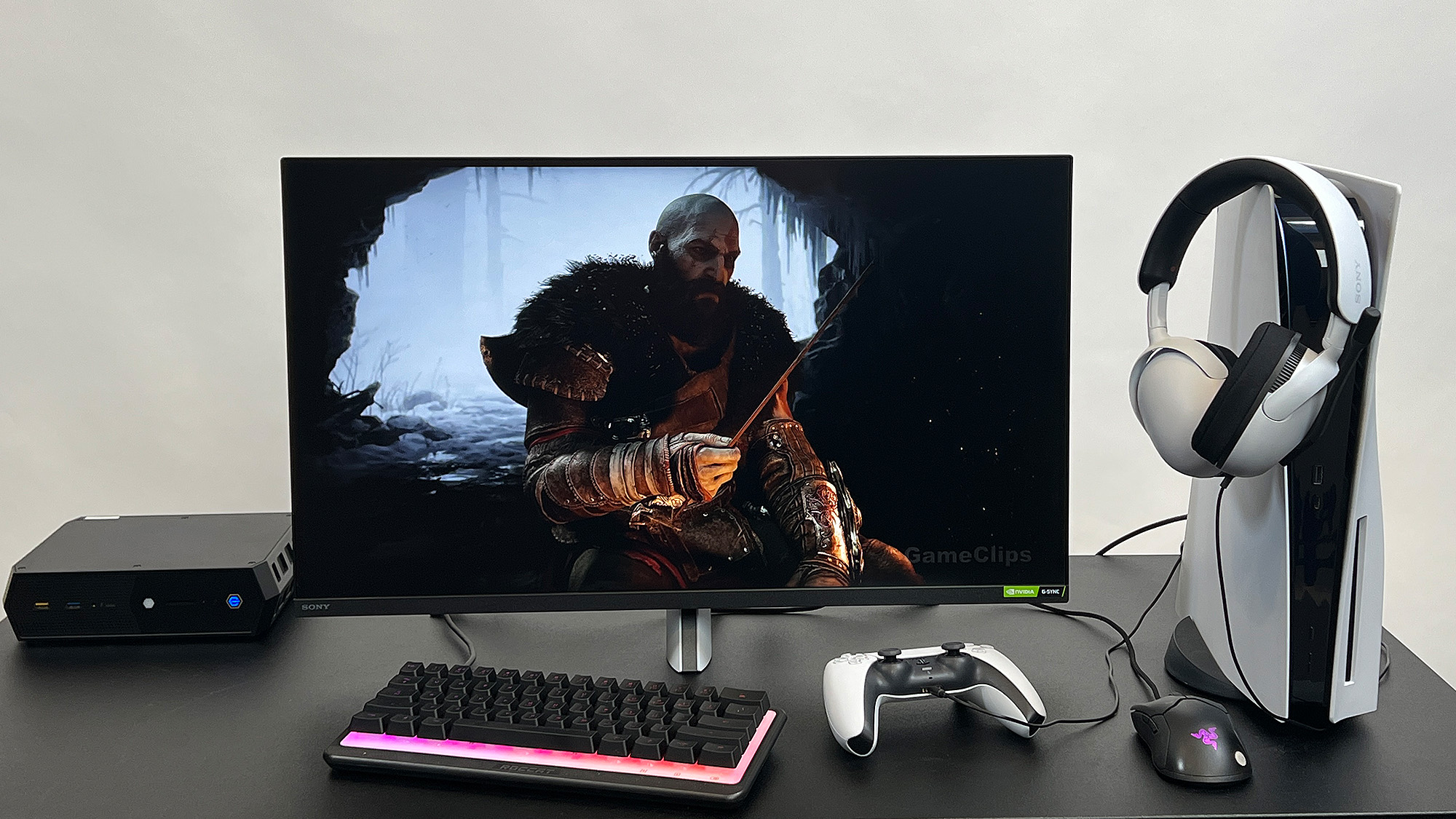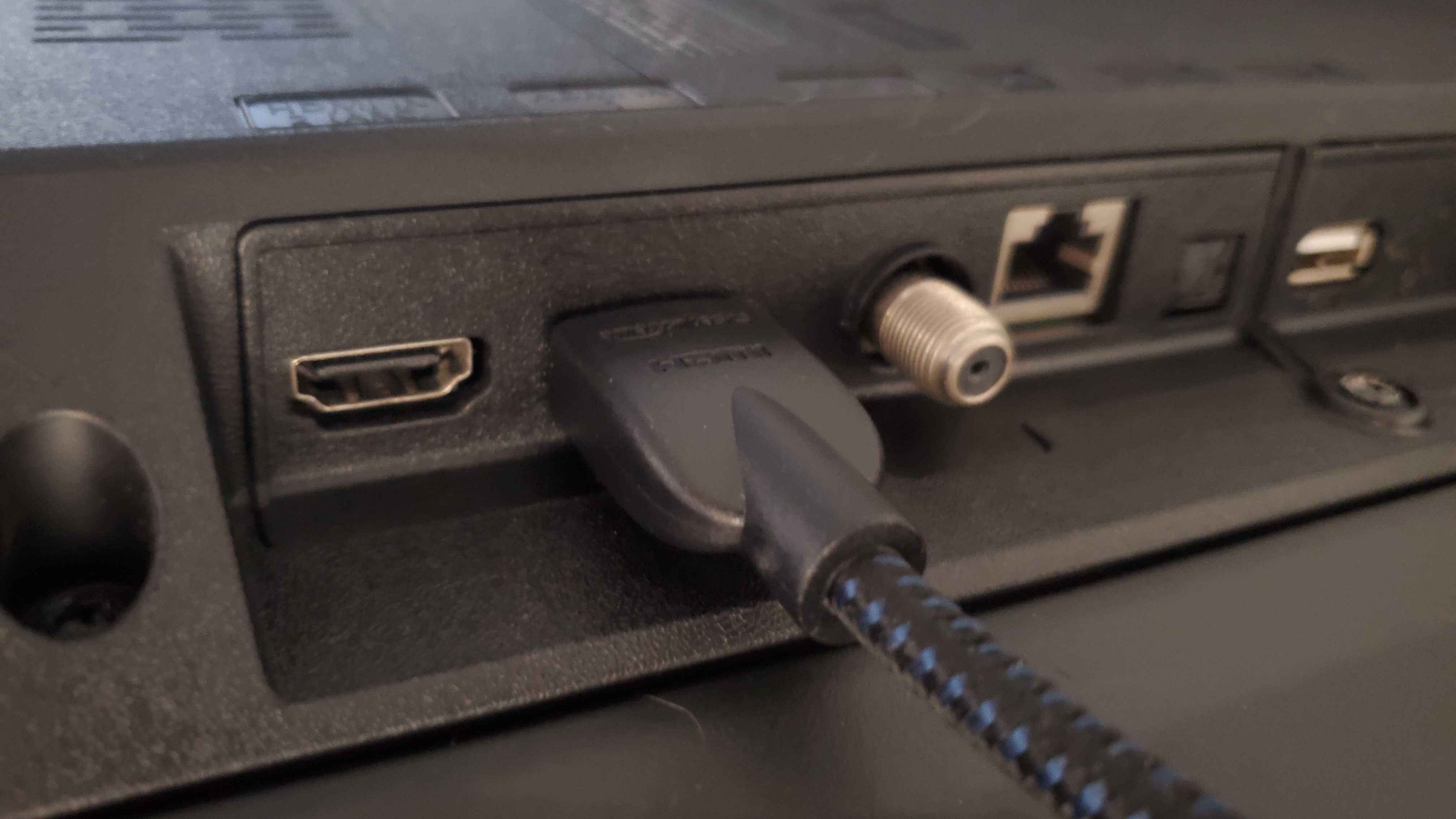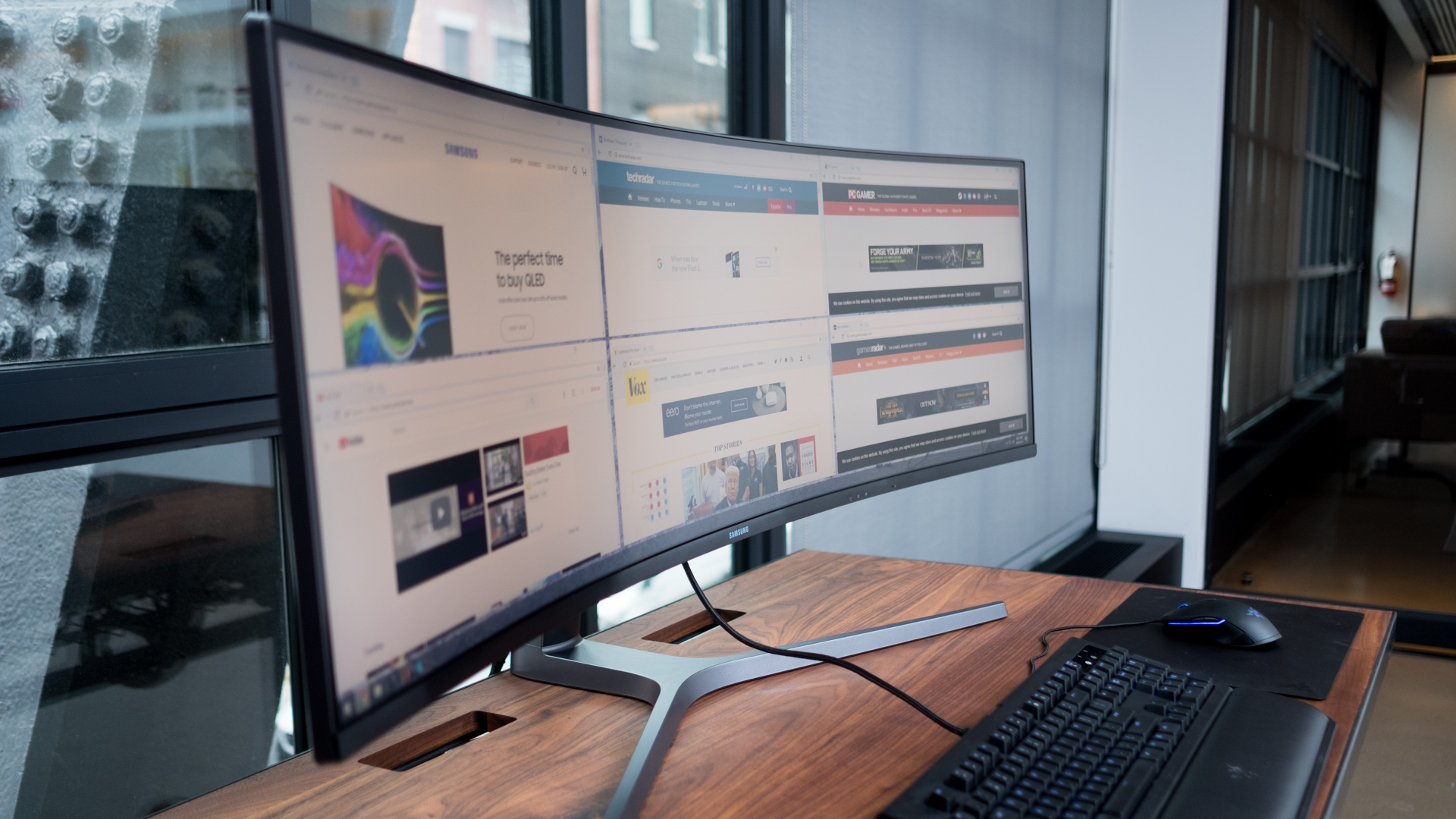How to buy the best gaming monitor

The first step in maximizing your gaming setup is to find and purchase the best gaming monitor. To do this, it's important to carry out your due diligence and properly research what kind of gaming monitor will best suit your needs, as well as establish your budget, and ensure that the connective methods between your monitor and gaming PC match.
This is all vital because even if you have the best gaming PC with high-end specs, if your display or cable doesn't match then you're not taking full advantage of your rig. Gaming monitors, when chosen carefully, can truly maximize not only graphics but how smooth the visuals are, the richness and vibrancy of your colors, the screen brightness, and more.
We've put together the best guide that is guaranteed to help you purchase the best gaming display for your needs, whether you want the best 4K monitor with the latest specs, the best 1440p monitor that offers more affordable but still great resolution, or the best cheap gaming monitor deals that won't break the bank. If you follow our guide you can rest assured that you'll have the best experience finding your gaming monitor.
Steps for how to buy the best gaming monitor
- Establish gaming needs
- Establish budget
- Research other specs
- Research connectivity options
Tools and Requirements
- Gaming monitor
- Gaming PC
- HDMI or DisplayPort cable
Step by step guide
1. Know what your needs are

Before you begin shopping for a gaming monitor, it's vital to figure out what your needs are. There are many types of monitors, with specs that work for different types of video games.
For instance, if you play first or third-person shooters online against other players, getting a gaming monitor with a refresh rate of at least 144Hz, a 27-inch display, and a resolution of 1440p (quad HD) is vital to ensure smooth and stutter-free gameplay.
But if you're a more casual player, then a 120Hz refresh rate, 24-inch display, and 1080p resolution are more than adequate specs for most games.
A high-quality monitor for those who play casually but want gorgeous visuals would start at 32 inches or larger, 4K resolution, refresh rate at 120Hz, and HDR with 1,000 nits or more brightness. But often you don't need this to start unless you want to invest in the best.
2. Establish your budget

Once you've figured out what your needs are, you then need to compare that to your actual budget. For instance, if your budget is $300 but you're checking out that 4K 32-inch gaming monitor, chances are you can't afford its massive price tag.
The cheapest gaming monitor is going to be around $150-$200 and that would be the baseline 120Hz refresh rate, 24-inch display, and 1080p resolution.
If you're willing to spend a bit more to future-proof your monitor or if you're a more competitive gamer who often plays first and third-person shooters, the 144Hz refresh rate, 27-inch display, and 1440p resolution monitor would set you back by about $250 to $500.
For those who want the best of the best (aka 4K resolution, HDR with 1,000+ nits of brightness, at least 120Hz refresh rate), expect to spend at least $1,000.
3. Research specs, terms, and features

Other than the main specs of refresh rate, resolution, and display size, there are other metrics to look for to ensure that you're buying the right gaming monitor for you. Display panels, which display the image on the screen, have a huge impact on the quality of said image. It can also affect pricing, which means they tend to be grouped in the corresponding budget levels of monitors.
Twisted nematic (TN) panels are popular in the competitive gaming world, TN panels offer high refresh rates, response times, and a low input lag. But they tend to have poor viewing angles (bad for larger sizes) and are the cheapest.
In-plane switching (IPS) panels provide superior color accuracy and wider viewing angles compared to TN panels but have slightly slower response times and poorer contrast ratios. These tend to be much more expensive.
Vertical alignment (VA) panels offer better reproduction and contrast ratios than TN panels while providing faster response times than IPS panels. However, they may experience some motion blur in fast-paced gaming scenarios. They tend to be in between TN and IPS in terms of pricing.
Organic light-emitting diode (OLED) panels provide wide viewing angles and fast response times, OLED panels are known for their vibrant colors, high color accuracy, and excellent depth. Often the most expensive option.
4. Make sure connectivity options match your PC

Something else to consider when choosing a gaming monitor is its connectivity options, or what kind of cable(s) it uses to connect to your gaming PC. The two main types are HDMI and DisplayPort, though it can also connect using a USB Type-C port.
HMDI is widely used for a number of devices and is the most popular option for whichever monitor you purchase. If you're on a budget and a more casual gamer, this is the more affordable option.
DisplayPort has superior bandwidth, better spec options, and is designed specifically with monitors in mind. So out of the two, I would personally recommend DP for those more serious about gaming.
It's worth almost investing in a gaming monitor with Thunderbolt 4 USB Type-C ports if you can, as it gives you more options.
5. Curved monitors are worth considering

Curved monitors are almost always high-end gaming monitors that tend to be much larger with more luxurious specs, and are characterized by a distinctive curve instead of perfectly straight like the average monitor.
These can be useful as they fit in a much larger display size while taking up less room on your desk, they let you see more of the game UI and environment as the ends are curled toward you, the curled ends prevent screen glare, and more. Of course, these also tend to be much more expensive since they have higher-end specs.
There are three types of curved monitors with different levels of curvature: 1000R, 1500R, and 1800R. The 'R' stands for radius so a 1000R forms a complete circle with a radius of 1000mm or one meter and so on.
Unlike the 1500R or 1800R versions, the 1000R most closely matches the curvature of our field of vision which means it's ideal for fast-paced competitive titles while reducing eye and neck strain.
Final thoughts
There are tons of different gaming monitor options, which is why proper research is so important, as it helps you avoid purchasing something that at best is a mediocre experience and at worst doesn't work with your gaming rig.
But there's also another type of gaming monitor that bears mentioning, one being bendable monitors.
Bendable gaming monitors are a new trend, with very little on the current market. They allow you to adjust the panel from flat to curved, which is useful as you can customize your monitor to adjust to your needs. But they're rather sparse right now, so it's best to wait and set how this type develops before investing.
You might also like
- How to set up a gaming monitor
- 5 things you need to know before buying a gaming monitor
- Gaming monitor vs gaming TV
Sign up for breaking news, reviews, opinion, top tech deals, and more.

Named by the CTA as a CES 2023 Media Trailblazer, Allisa is a Computing Staff Writer who covers breaking news and rumors in the computing industry, as well as reviews, hands-on previews, featured articles, and the latest deals and trends. In her spare time you can find her chatting it up on her two podcasts, Megaten Marathon and Combo Chain, as well as playing any JRPGs she can get her hands on.